Written by Jessica Walthew with Andrea Lipps
Accompanying the exhibition Acquired! Shaping the National Design Collection, Cooper Hewitt’s conservators offer a closer look into the process of preparing collection objects for display and long-term preservation.
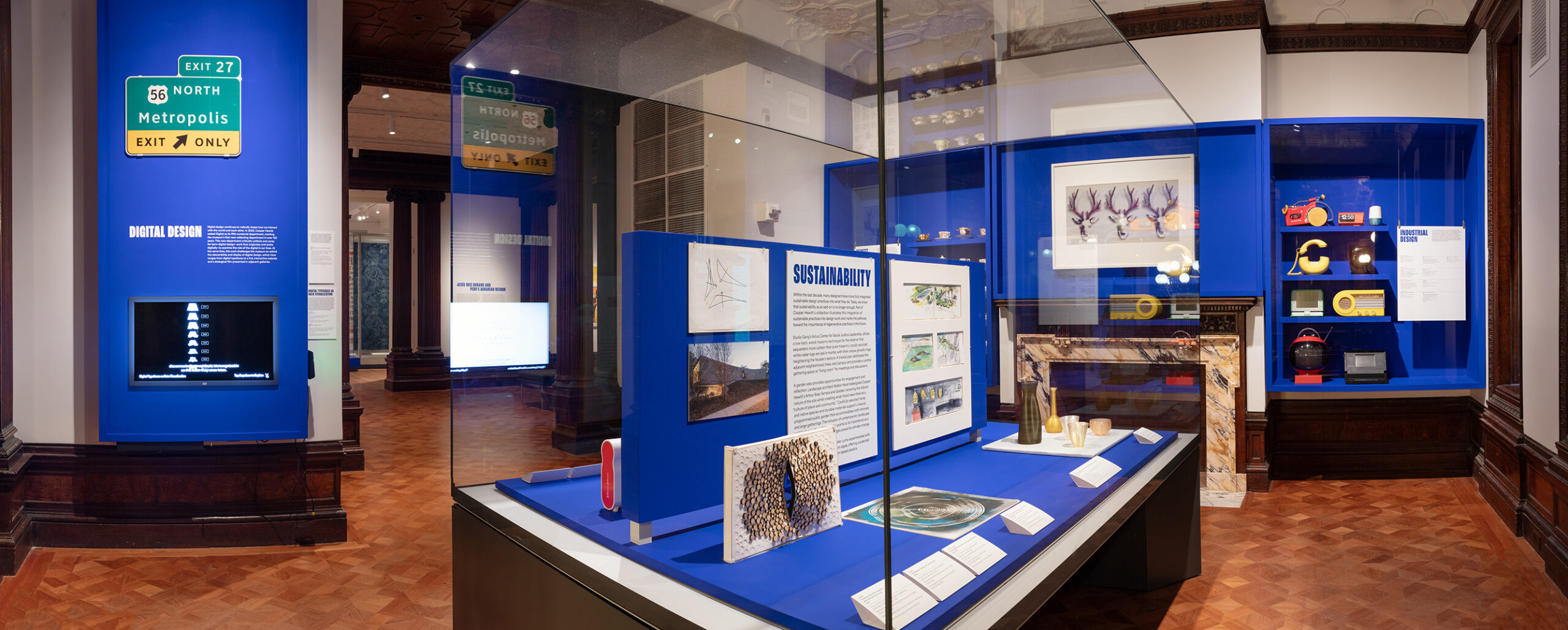
Gallery view of Acquired!, featuring a digital font kiosk at the far left. Photo: Elliot Goldstein © Smithsonian Institution
Tucked in a gallery displaying teacups, radios, and textiles is an interactive screen displaying two free, open-source fonts—both recent acquisitions to Cooper Hewitt’s Digital department. The fonts, Climate Crisis and Ugly Gerry, use data to inform their designs and push at the limits of legibility, functioning perhaps more as data visualizations than as fonts. The works are part of Acquired! Shaping the National Design Collection, which showcases a range of objects illustrating what it means to be a design museum today. Yet where physical objects can be displayed in vitrines and on pedestals, digital works require hardware on which to be natively accessed, offering a unique opportunity in the display of design.
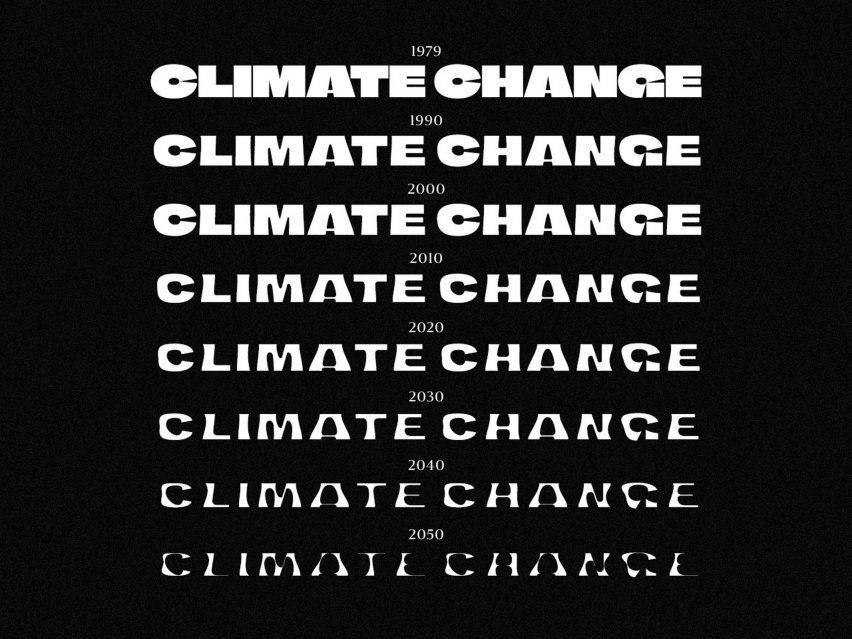
Variable Font, Climate Crisis, 2020; Designed by Eino Korkala (Finnish, born 1985) and Daniel Coull (South African, born 1990) for Helsingin Sanomat (Helsinki, Finland) and TBWA/Helsinki (Helsinki, Finland); Digital typeface; File in public domain, collected by Cooper Hewitt in collaboration with the designers, 2021-30-1-1/9
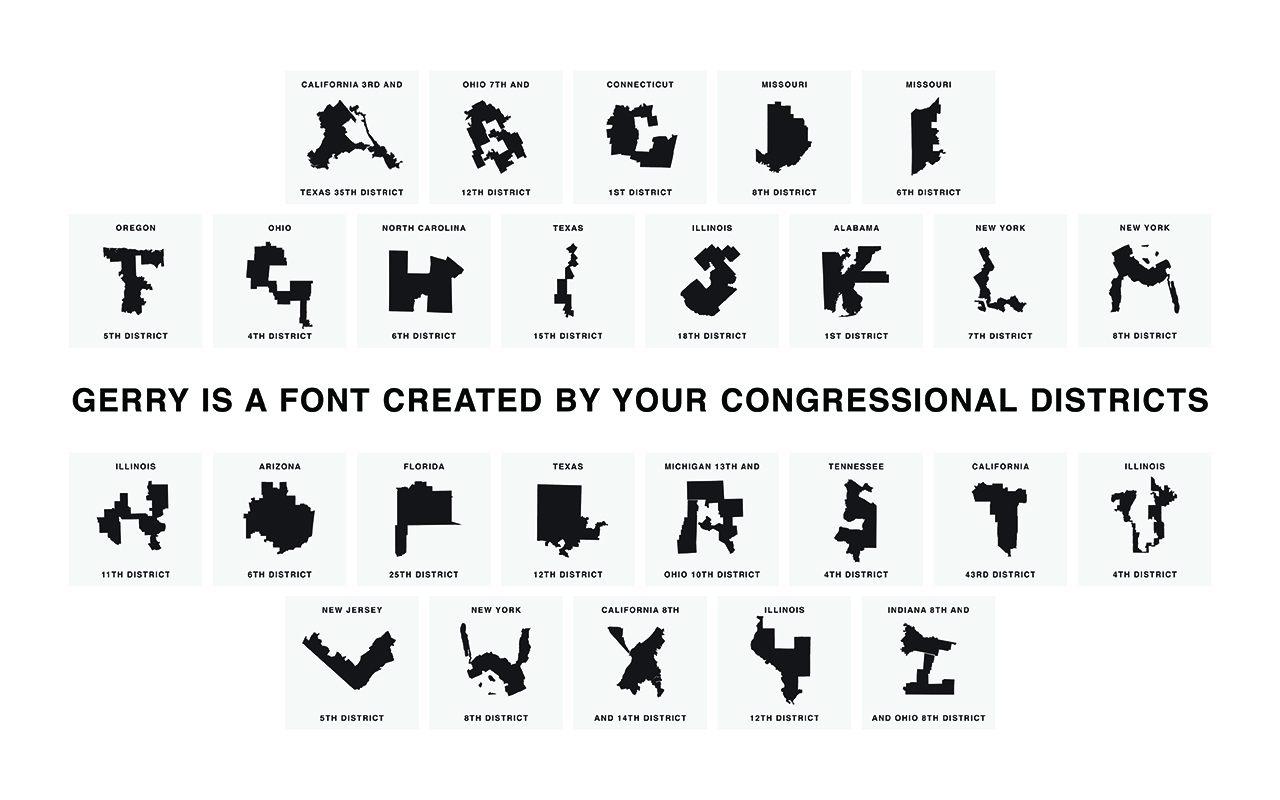
Font, Ugly Gerry, 2019; Designed by Ben Doessel (American, born 1987) and James Lee (American, born 1988); Digital typeface; File in public domain, collected by Cooper Hewitt in collaboration with the designers, 2022-2-1
Climate Crisis, by designers Daniel Coull and Eino Korkala, is a variable font that visualizes the urgency of climate change. Its letterforms map sea ice data from 1979 to 2050 onto the weights of the font, which begin as chunky and robust but as time advances, the letters appear to melt away until they are almost illegible. By contrast, Ugly Gerry, designed by Ben Doessel and James Lee, is a static all-caps font. Its disfigured letterforms are made from the odd shapes of gerrymandered US congressional districts, visualizing the distortions made by political parties when they redraw district lines to favor a political party’s dominance.
In the gallery, both fonts are displayed on a touch screen interactive designed by Cooper Hewitt’s in-house Digital and Emerging Media team. As curator Andrea Lipps explains in an accompanying video, designers of fonts like these use illegibility to force us to engage with difficult issues. To enable interactivity that demonstrates how the fonts function, we generated phrases relevant to each of the typefaces that users can select to view each font. For instance, a type specimen for Climate Crisis includes, “This font visualizes the urgency of the climate crisis,” and for Ugly Gerry, “Politics can get ugly.” Touching or toggling the on-screen interactive also allows a user to scale the selected font up and down in size, to change its specimen, and to read additional information. For Climate Crisis, users can further slide between years of the font’s weights to see the letterforms melt away.
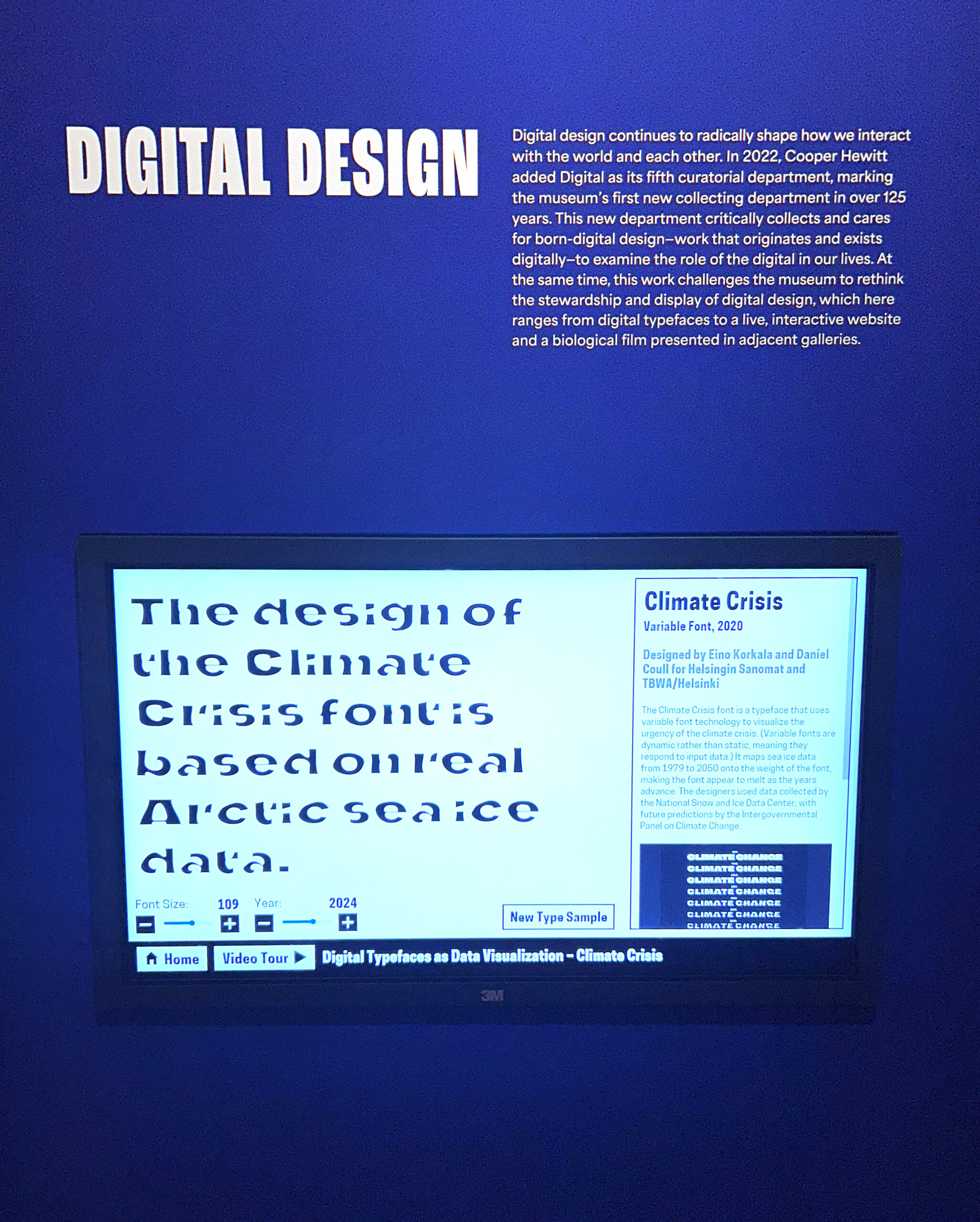
Digital font kiosk displaying Climate Crisis font.

Digital font kiosk displaying Climate Crisis font as it melts from 2024 to 2050.
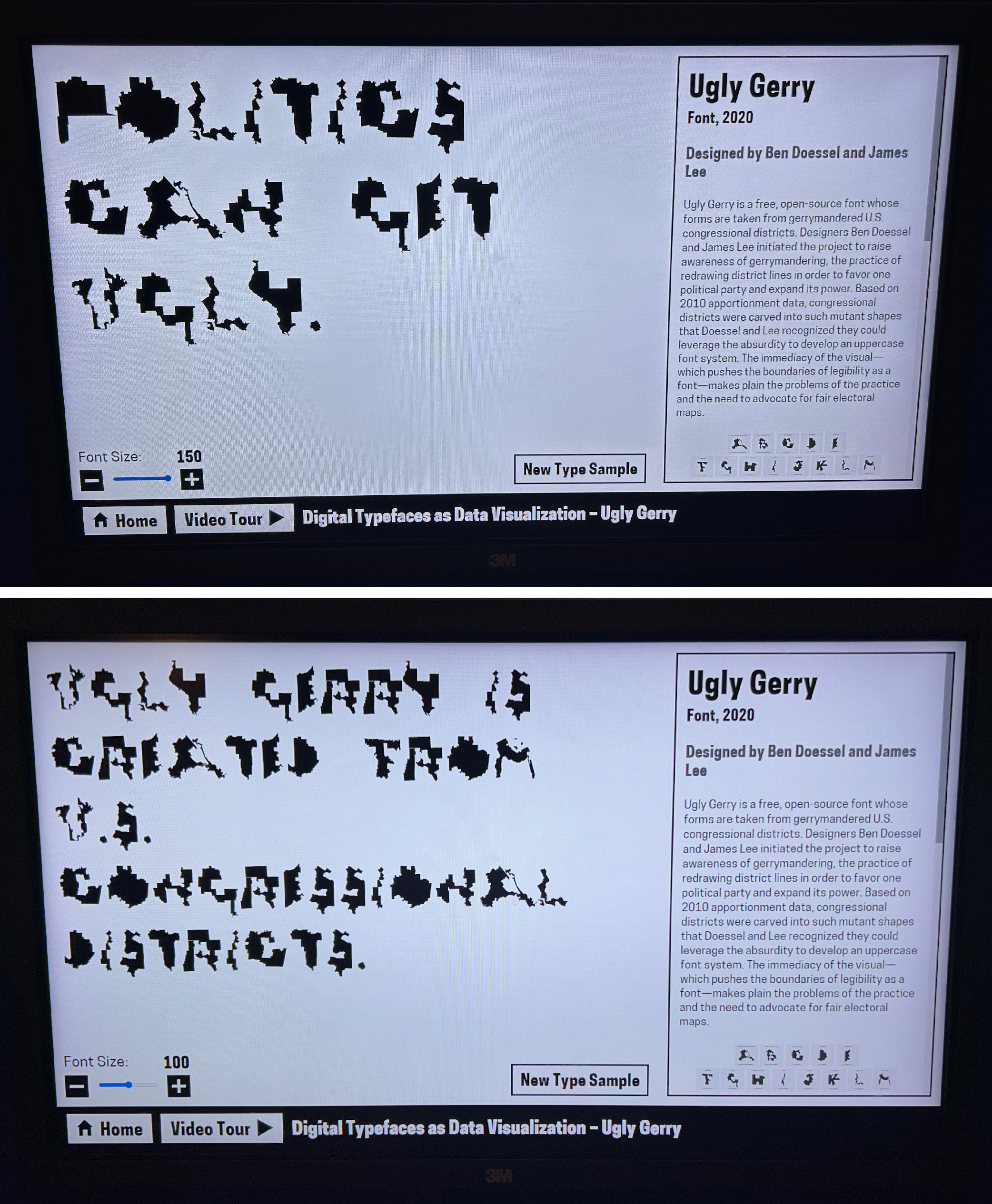
Digital font kiosk displaying Ugly Gerry font.
Collecting and displaying digital work presents new possibilities into how museum visitors might interact with collections, both in the museum’s galleries and online. The digital type kiosk in Acquired! enables a more dynamic in-gallery presentation, but our focus on two free and open-source fonts for this display is also deliberate. Open-source digital fonts—made available on Open Font Licenses (OFLs) established in 2007—are freely available for personal or commercial use with credit attributed to the originating designer. They are an important resource within the type community to promote mutual exchange and collaboration, to activate ideas, and to teach young designers how to make and use type. Both fonts are available for free download: you can find Climate Crisis on Google Fonts (Climate Crisis – Google Fonts) and Ugly Gerry on Fonts Arena (Font, Ugly Gerry (fontsarena.com) to try them out at home yourself.
Jessica Walthew is a conservator at Cooper Hewitt working with the product design and decorative arts and digital collections.
Andrea Lipps is associate curator of contemporary design and head of Digital Collecting at Cooper Hewitt.
The exhibition Acquired! is on view at Cooper Hewitt through August 25, 2024.